- Share full article
Advertisement
Supported by
Special Report: Rolex Fastnet Race

Hints of the Modern Invade Royal Yacht Squadron

By Christopher Clarey
- Aug. 14, 2015
COWES, England — At the Royal Yacht Squadron, they still wear black tie and toast the queen every Saturday night. They still fire the cannons from their battlements to start the Rolex Fastnet Race and scores of other races throughout the year.
But as it celebrates its 200th anniversary in 2015, the Squadron — as it is known in Britain and in much of the sailing world — is not quite the same club of old.
It remains seriously exclusive and thickly populated by royals: from Prince Philip, the now 94-year-old husband of Queen Elizabeth II, to Juan Carlos, the former king of Spain, to the Aga Khan.
Yet the Squadron elected its first three female full members this year, even if their names have yet to be released publicly. The club also has adopted a palpably more open approach to those who dwell outside Cowes Castle, the Squadron’s clubhouse on the Isle of Wight that was first used for defensive purposes when built by Henry VIII in 1539.
“I think we’re more relaxed about it all,” the club’s commodore, Christopher Sharples, said in a recent interview in the castle. “There used to be the feeling that you mustn’t put your head above the parapet or you’re certain to be shot. And I think they’ve got quite good parapets here.”
They do indeed, as well as a memorable, concentration-sharpening sign affixed to them: “Warning. Starting cannon may fire at any time.”
“I think there was a notion for quite a few years that the Squadron was a bunch of sort of pompous old guys together, very much the blue-blood, old-school type of thing,” said Mike Broughton, a British navigator and former British naval officer. “To be honest, I think over the last 10 years in particular, they’ve worked hard to modernize and also to modernize in terms of professional racing. They’ve modernized their racing management, which has been great to see actually, and they’ve worked hard to keep up with the times.”
That does not mean, however, that the time has come for an outsider with a profound love of the sea (and fancy dinners) to ring up the Squadron and ask to be emailed a membership application.
“The first thing to say about that is you get invited; you don’t apply,” Sharples said.
The club’s regular membership is now capped at 535, and there is a four-year waiting list. “There are also about 70 naval members who come in from a slightly different category,” Sharples said. “They come in through a side door and don’t have to queue up, and that’s because of our longstanding relationship with the Royal Navy.”
The club remains the only one whose member yachts are allowed to fly the white ensign of the Royal Navy.
The recent decision to add female members is part of a wave of similar moves by long-established British clubs: the Royal & Ancient Golf Club of St. Andrews in Scotland elected its first female members in 2015 after 260 years of existence.
“I’m a firm believer that if a club wants to be a single-sex club only, it can be, but not if it’s connected to sport,” Sharples said. “I think if you have a social club in London, I liken it to bull elephants hanging around a watering hole. Well, nobody seems to mind about that do they? But if on the other hand you are connected to a sport where you have facilities that sportsmen use, it seems to me much better that you give equal opportunity to ladies to use and access those facilities.”
When the club was founded by 42 gentlemen in 1815 in a gathering at the Thatched House Tavern in London, prospective members were required to own a vessel of at least 10 tons.
Today, boat ownership — at any tonnage — is not a requirement. “You have to be somebody who is actively involved in sailing,” Sharples said. “If you have access to a boat or regularly sail on somebody’s boat, that’s fine.”
To become a candidate, one needs a proposer, a seconder and three other initial letters of support, plus eight additional letters: all of these from club members. Only then does one join the list with a chance to eventually face an election, which involves the full membership.
Avoid too many blackballs and you will join a club with a uniquely rich maritime history whose members and their boats played a role in both World Wars. The membership roll has included the Arctic polar explorers Robert Scott and Ernest Shackleton, a Russian czar, British kings, the round-the-world solo-sailing pioneers Francis Chichester and Robin Knox-Johnston, as well as Ben Ainslie, Britain’s biggest sailing star of the moment, who the club hopes can finally bring the America’s Cup back to the Squadron.
It left here in 1851 when the yacht America — owned by a syndicate of New York Yacht Club members — defeated a fleet of yachts representing the Squadron in a race around the Isle of Wight.
The Cup, a silver ewer, had been purchased for the competition by a Squadron member, Henry William Paget, First Marquess of Anglesey, who had had his right leg amputated after being wounded by one of the last cannon shots of the Battle of Waterloo in 1815.
Cowes Castle was Paget’s summer home, and it became the Squadron clubhouse after his death in 1854.
The cup purchased by Paget was eventually renamed the America’s Cup. Though the Australians at last managed to wrest it away from the New York Yacht Club in 1983 and yacht clubs from New Zealand and Switzerland have since won it, the British have yet to reclaim possession.
Ainslie, an honorary Squadron member and four-time Olympic gold medalist, helped Larry Ellison’s Oracle Team USA retain the trophy in 2013 by playing a major role in the epic comeback in San Francisco against Emirates Team New Zealand. But he is now head of his own team, Ben Ainslie Racing, which will represent the competitive arm of the Royal Yacht Squadron in the 2017 America’s Cup competition in Bermuda.
That will come in the final year of Sharples’s four-year term, which has already included the bicentennial celebration.
“I suppose my ultimate aim, if you like, is to help Ben bring the Cup back to this club before I step down,” Sharples said.
Yachting World
- Digital Edition

Inside the Royal Yacht Squadron – we get a rare view of this most exclusive club
- Belinda Bird
- May 18, 2015
Sarah Norbury jumps at a rare chance to see inside the Royal Yacht Squadron, that unique and intriguing yacht club at the centre of Cowes, in its 200th anniversary year

Photo: Paul Wyeth
Bicentenary celebrations
More immediately, this year the club is celebrating its 200th anniversary in a summer-long extravaganza. The highlight will the Squadron Regatta in July, a week of racing and what’s being billed as ‘spectacular social gatherings’, including a grand ball for members of 25 invited clubs from around the world. Yachts from the USA and the Caribbean will arrive after crossing the Atlantic for the Regatta and then stay on for Cowes Week and the Rolex Fastnet Race.
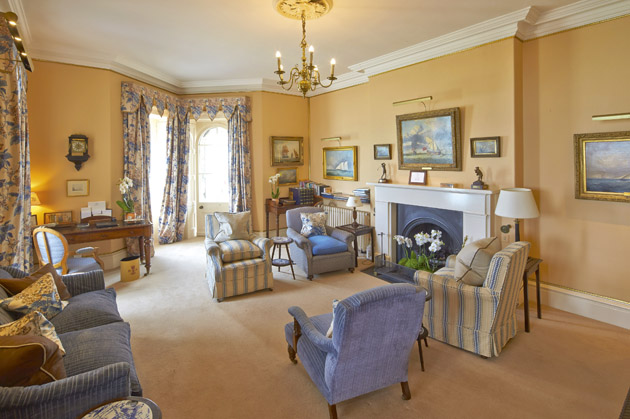
The Ladies Drawing Room
The Squadron is gearing up for the events with a complete refurbishment of the ground floor of the Castle, as well as taking on extra staff, compiling special menus and considerably increasing the usual wine orders.
When I was invited inside the Castle for this article I was the envy of sailing friends. Some recalled their own, never-forgotten visits, one to deliver a harp for a musical soiree, another invited by a member for a drink, surprised to discover that there is no bar; instead stewards know when top-ups are needed and appear bearing glasses on silver trays.
Like more and more sailors I had been on Squadron soil before, to the Pavilion annexe built in 2000. To help swell the coffers, the grand marquee-style building can be hired for championship dinners and class parties. With panoramic views of the Solent, as a Cowes Week après sail venue it’s hard to beat, and once there, in your smart shore gear, sipping a glass of fizz and nibbling smoked salmon canapés it’s easy to get above yourself and imagine just slipping into the Castle. If you try it, however, you’ll get short shrift.
You could say the club is very good at welcoming non-members into its garden, or conversely that it’s adept at attracting them to the periphery then holding them at bay.
There’s a painting of the entire membership outside the Castle, circa 1895. In the centre stand the club’s then commodore the Prince of Wales with his nephew and great yachting rival, Kaiser Willhelm II, and the Dukes of York and Connaught, while on the upper left-hand side are ladies, in their finery, standing on a lawn.
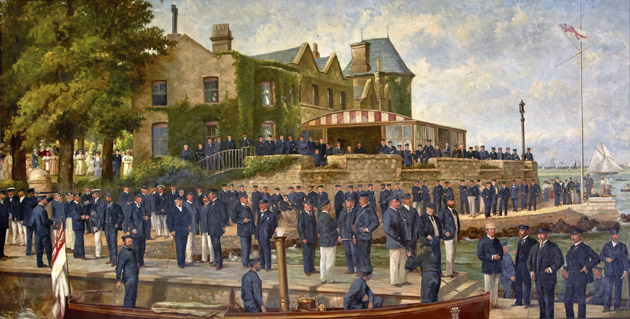
RYS members in 1895
That lawn was known as the Deer Park – I’m told the ladies were known as the ‘does’ – and it’s the only part of the Squadron’s domain in which they were allowed to roam. Even Queen Victoria didn’t make it into the inner sanctum – she was kept at bay in an annexe built for her on the front of the Castle, known as the Platform.
In 1964 wives, sisters and daughters of members were given their own annexe, built onto the end of the Castle in matching stone. Here, the Lams (Ladies And Associate Members) could eat in their own dining room, take tea on the balcony and watch the racing. They were not allowed to cross the carpet-rod border into the inner Castle, however.
Since then the rules have relaxed and ladies are free to enter the Castle as Lams and guests, but it was only in June 2014 that finally the new rulebook was approved that allowed women to be proposed for full membership.
The next voting session is due soon and it’s likely that the first female member will be HRH Princess Anne.
- 1. Flying the white ensign
- 2. Bicentenary celebrations
- 3. Inside the Castle

The History of London’s Coveted Royal Yacht Squadron
When you think of the Royal Yacht Squadron a lot probably comes to mind. Did you know that the Royal Yacht Squadron is an amazing yacht club that is nearly 200 years old? It was founded in 1815 and continues to be a rich part of living history today. The Royal Yacht Squadron was first founded in St. James’, London.
To become a member of the Royal Yacht Squadron when it first started, you had to own a vessel that could not be more than 10 tons. In today’s version of the Royal Yacht Squadron, you will find that most of the people are just interested in yachting. Interesting enough, the founder of the club was known as The Earl of Yarborough and his first member’s name was Prince Regent. When the Prince joined the RYS it became “royal.” Want to become a member in 2016? A current member has to nominate you and then you are voted in.
The members of the Royal Yacht Squadron didn’t just sit around on their yachts all day. They took voyages for miles and miles. One of the most famous voyages is known as Lord Brassey’s Sunbeam and he logged 37,000 miles! Another famous story of the RYS and their members was when Ben Boyd was actually captured and eaten by natives.
The Royal Yacht Squadron is also a rich part of history. During both World Wars, there were several yachts and their members that went to help. The Squadron offered up the clubhouse during WWII and it actually suffered damage. The damage was caused by air raids. The area was specifically targeted because it was a place where ships were made. As you can see, this would be a great target for an enemy during WWII!
Many people want to get into the Royal Yacht Squadron for several reasons. One is because of the rich history of the club. Another reason is that it is a prestigious club as they do not just accept anyone. Even though the cup has never been won back by a British challenger, 2017 is quickly approaching and things could change. Become a member of the Royal Yacht Squadron or you could also try one of these 5 exclusive yacht clubs .
Share this Story
Suggested for you.
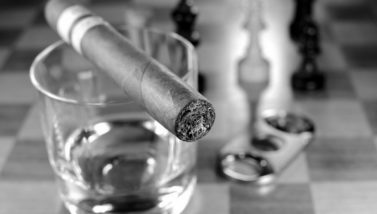
The Top Lounges for Cigar Lovers
Today, exclusive cigar lounges can be found in luxury hotels which have made accommodations for their cigar-loving clientele.

Inside The Oldest Jewelry House in the World
Take a look at the history of this storied house and a few of the pieces that have allowed Mellerio dits Meller to stay brilliant for over 500 years.
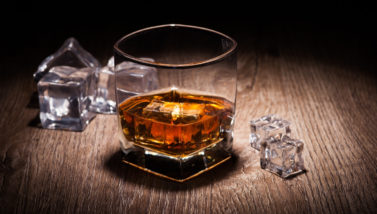
Whiskey Tasting Destinations Perfect for Your Vacation
Expand your knowledge of whiskeys when you plan a whiskey tasting vacation!
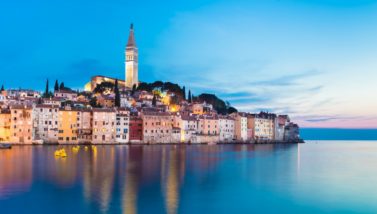
The Best Fine Dining in Croatia
Visit the restaurant in Croatia that is the first in the country to be awarded a Michelin Star. We also have several others that are worthy of a visit.

Do You Know How to Wear a Caftan?
How do you wear a luxurious and flowing caftan? Let our fashion ambassador Kristen Taekman show you how to make the most of this trendy piece.

Golf Courses in the US That You Must Try
Looking for the best golf courses in the United States? We have narrowed down the options to our five favorite locations.

The World's Best Opera Houses
We’ve broken down a list of the world’s best opera houses by specific appeal, so you can prioritize your travels based on your interests.

Shoes Priced Over $1 Million
These shoes are priced at over $1 million dollars a pair. From ruby encrusted slippers to ones covered in white diamonds, we have them all!
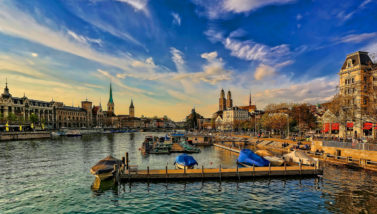
Our Picks of the Best Destinations for Your Honeymoon
Find a perfect honeymoon destination with our picks for the best June honeymoon.

.Luxury on Instagram
Home » Recent Articles » The History of London’s Coveted Royal Yacht Squadron
- dotLuxury Network
- Privacy Policy
- Ambassadors
Become a .Luxury Insider
Gain access to our exclusive view into the world of Luxury.

- BOOK A TABLE
- WEATHER STATION
- FUEL PRICES
Royal Queensland Yacht Squadron
The Royal Queensland Yacht Squadron is Queensland’s oldest and one of the most prestigious recreational boating clubs.
It is also unique in the variety of recreational activities catered for within the one club. This web site is intended not only to provide up to date information for our existing members, but also to introduce visitors to our organisation and its facilities, and to convince them that they would feel at home among us.
The Squadron has a proud history of involvement in sailing, from the juniors in dinghies, through families enjoying the delights of relaxing on Moreton Bay, to our elite sailors competing with distinction in class championships and at international and Olympic regattas. Our Register currently includes a large number of power craft of various sizes, shapes and displacements, and these members enjoy friendly competition, both within their number and against members of other clubs both in Queensland and interstate.
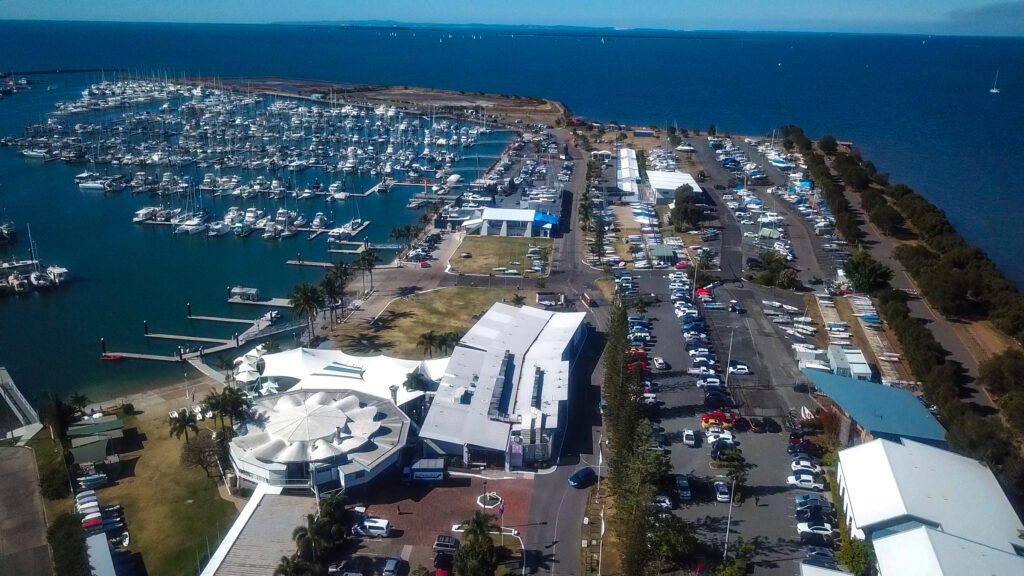
The establishment in 1994 of the RQYS Sailing School formalised various diverse teaching programs into a distinct unit with a focus on achieving high standards of competence in marine leisure activities, with an emphasis on youth. The major facility is located at Manly in Brisbane’s south-eastern Bayside suburbs, with a smaller ‘down the Bay’ premises at Canaipa Point on Russell Island in southern Moreton Bay.
The grounds of the Royal Queensland Yacht Squadron contain facilities that are of the highest standard to meet all your sailing and social needs, including our much-envied rigging lawns and an unrivalled environment to wine, dine and relax in.
Roam in our Clubhouse and explore our heritage
Your first stop into the Squadron is our Clubhouse which displays our rich heritage and memorabilia from members past and present. Here you will find the Miller Gallery where trophies, boat displays and many artworks including pieces of history are displayed. The Gallery is entrance to the Auditorium, Commodore’s Lounge and Girdis Room all found within the Clubhouse. If you would like a tour of these areas, please ask our friendly Clubhouse receptionist who will be more than happy to show you and provide you with some further information.
Dine in our Café and Restaurant amidst the beautiful view of Manly Harbour
Under the RQYS Clubhouse Pavilion, you will find our RQ Bar, Boardwalk Café and our Squadron Harbour View Restaurant.
With the members bar open from Monday at 4pm and food service opening for lunch and dinner on Wednesday- Sunday, members and guests can enjoy open-air dining and lavish meals created by our acclaimed Squadron chefs.
Cavill Building
Built in 1964, the Cavill Building with its scallop design was the first building on Squadron premises. Upstairs you will find a Flags Function room which holds the most stunning view of the Bay and private bar for functions, below you will find our most oldest heritage including a Board listing all of our Past Commodore’s and Life Members.
Rigging Lawns
Our Rigging Lawn, just outside the pavilion is particularly busy during regattas with as much as 100 boats preparing for the day ahead! When it is quiet, you may catch a glimpse of a wedding ceremony held on the lawn in front of our beautiful harbour milieu.
Through our secure access gates, the RQYS Marina can accommodate up to 572 vessels in floating berths and 300 vessels in dry storage so no matter what size boat you have, we can accommodate to your needs. A dedicated administration office in the marina can assist you with any enquiry and there is extensive car parking throughout. Our slipping facilities include a travelift, slewing crane and service area with frames and for a little extra care; there is a Marine Trade centre dedicated to marine engineering and boat repairs for all makes of vessels.
The Squadron accommodates trailerable and Dinghy vessels easily. You can be assured that your vessel will be safe and secure with our allocated hardstand spaces. Please contact our marina office to secure your hardstand space today. Several courtesy bays are also provided for members cars with trailers attached for short duration stays.
Please note that dinghies and vessels must not be left on rigging lawns or in the marina without consent from the marina office.
The Squadron has two ramps for members use. The most common ramp is utilised primarily as the main access for dinghy classes and can be used for the launching and retrieving of trailer boats. The Eastern ramp or the ‘all tide ramp’ may be used for launching and retrieval of trailerable boats. However, if you intend to use this ramp be aware it is accessed through the marina hardstand area and launching and retrieving should not interfere with work within this area.
Even though the ramps are cleaned regularly, we ask that you should always exercise caution as they can be slippery. On busier days, a ramp marshall may control traffic on the middle ramp and please listen to any direction given by them so that you can access the ramp in the safest way possible. A free wash down facility is available on the concrete apron at the head of each ramp and we ask that boats are not washed down on the lawn.
Every Member is given a personalised access card which grants them the use of the Squadron depending on their category of membership.
Our newly installed proximity system makes it easy for members to enter and leave the Squadron at any time of the day and can enable bar and café charges and fuel use with one simple card.
For visitors of members, we can also provide temporary access upon request. Please contact the Squadron office for more information.
Tradespersons working on members boats that do not possess a Trades Pass must advise the office to gain access. Office Hours: 8am to 5pm Monday – Friday. Regular visiting tradespersons and delivery suppliers are encouraged to purchase a Trades Pass at an annual cost and can chose between a 5 day or 7 day pass.
Please note that use of members tags by vehicles other than members own vehicles is not allowed. Tailgating is prohibited and may cause damage to vehicles. Temporary tags are available for periods up to one month to persons in the following categories on payment of a refundable deposit.
Located at the north eastern extremity of the Squadron grounds, this building incorporates wheelchair friendly showers and toilets and coin operated laundry. Access to these facilities on the lower level is by way of a members access pass. The upper level is an elevated viewing platform providing excellent views of the junior sailing fleets.

Vehicles parked on any part of the Squadrons premises are so left and parked at the owners responsibility.
(a) Vehicles may only enter the grounds by the IN gate and exit by the OUT gate.
(b) At all times only cars belonging to members and authorised personnel are entitled to be inside the Squadron grounds.
(c) Access passes may be issued to:- Squadron Members in the appropriate categories, Authorised Tradesmen by staff and the CEO on payment of the prescribed fee or deposit. Each Squadron member is entitled to one gate key tag. A charge will apply for tags lost or damaged. Deposits on tags may not be refunded.
(d) All vehicles within the grounds must display a Squadron Vehicle Identification Sticker or Parking Permit which must be attached to the vehicle windscreen or clearly displayed on the vehicle dashboard in such a manner that the identification number may be clearly read through the windscreen.
(e) Members will be issued with a Squadron Vehicle Identification Sticker annually when they pay their subscription, and may request additional stickers which may be issued at the discretion of the Squadron.
(f) A Member can request a Parking Permit for a Members guest, which may be issued at the discretion of the Squadron. (g) If a vehicle is parked within the grounds not displaying a Squadron Vehicle Identification Sticker or Parking Permit, the Squadron can move the vehicle to another location within the grounds or outside the grounds, at its discretion, and without notice to the owner of the vehicle.
(h) If the Squadron deems it desirable or necessary to remove a vehicle displaying a Squadron Vehicle Identification Sticker or Parking Permit, the Squadron may give notice to the Member or vehicle owner requiring the vehicle to be relocated. The Member or vehicle owner shall be required to relocate the vehicle within 7 days of receiving the notice. If the member will not move the vehicle or the Squadron is unable to contact the Member or vehicle owner through the normal means within 7 days, the Squadron may move the vehicle to another location within the grounds or outside the grounds, at its discretion.
(i) No Member shall park an unregistered or un-roadworthy vehicle in the Squadron grounds without permission from the Squadron. The Squadron can move the vehicle to another location within the grounds or outside the grounds, at its discretion, and without notice to the owner of the vehicle.
(j) If the Squadron elects to remove a vehicle in accordance with paragraph (g), (h) or (i) above, the Member shall reimburse the Squadrons costs of removal, whether the vehicle is owned by the Member or a guest of the Member.
(k) So long as the Squadron exercises reasonable care in relocating the vehicle, the Squadron will not be responsible for any damage caused to the vehicle. The Member will indemnify the Squadron for any claims in that regard.
(l) For security reasons, members wishing to leave a vehicle and / or trailer in the grounds for longer than seven days shall seek permission from the General Manager, Marina Manager or if those personnel are not available, a General or Works Committee member who shall seek permission of the General Manager or Marina Manager. A charge may apply for long term storage of trailers. In all instances, trailers and cradles must be identified with the members and / or boat name.
(m) Unless prior arrangements are made with the Marina Manager and/or General Manager, if a vehicle is parked at the Squadron for a period exceeding 4 weeks, a parking fee can be charged to the Member for the period exceeding 4 weeks.
(n) The speed limit within the grounds is 10 km/h.
(o) Parking within Loading Zones is restricted to 15 minutes. (p) No parking shall be allowed on the red brick area in the front of the Manly Clubhouse, except for picking up of supplies from Ships Stores, wherein a limit of five minutes shall apply and also the area designated for disabled parking.
(q) No parking shall be allowed along Flagship Drive except for pick up or set down of boats wherein a limit of 10 minutes shall apply.
(r) No parking shall be permitted in Boat Hardstand areas. Trailer Boat owners may be exempted once their boat has been launched and the car and trailer are returned to the designated hardstand.
(s) Parking on Marina Hardstand Concrete areas is prohibited unless authorised by the Marina Manager. Clear access must be left to the Pillar Slewing Crane, the Slipway Winch, Travel Lift Jetty and Launching Ramps.
(t) Staff shall be required to park in areas specifically designated by the General Manager as Staff Parking Zones.
The directions on ALL SIGNS within the grounds, on jetties and marina fingers MUST be observed at all times.
Onsite Camping
RQYS has camping available on-site at the Eastern end of the Squadron’s grounds. The cost for camping is $15.00 per adult per night, with children 10 yrs and under camping for free.
Marina amenities are available for use by campers, including showers and laundry facilities.
Camping sites must be booked and paid for in advance by completing the following booking and indemnity forms:
On-site Camping
Please contact Clubhouse Reception for any additional questions by calling (07) 3396 8666, or by emailing [email protected]
Manly Marina Cove Motel View website Here
Manly Marina Cove is a 4 star motel located adjacent to the Royal Queensland Yacht Squadron where Brisbane meets Moreton Bay in Manly, Queensland. Just minutes drive from Wynnum, Lota and East Brisbane.
The quiet location offers great views over Moreton Bay and is close to many major road networks as well as the domestic and international airports. The motel is a 5 minute walk to Manly Harbour Village with a variety of restaurants and cafes. The location is ideal for corporates travellers doing business in the nearby business & industrial precincts in Manly, Wynnum, Lytton, Hemmant, Port of Brisbane and Brisbane’s Bayside. The accommodation is also perfect for people attending weddings and functions.
Yachting Queensland
Dormitory accommodation, contact Yachting Queensland direct on 07 3393 6788.
Download the Off-Site Accommodation List
Download the Camping Policy & Registration Form
Onsite Camping RQYS has camping available on-site at the Eastern end of the Squadron’s grounds. The cost for camping is $15.00 per adult per night, with children 10 yrs and under camping for free.
Please contact Clubhouse Reception for any additional questions by calling (07) 3396 8666, or by emailing [email protected]
Dinamo Elektrostal
Match results.
* Won by shoot-out
About Dinamo Elektrostal
Moscow’s Dinamo Elektrostal are gearing up for their fifth EHL season having frequently picked off impressive wins but have yet to top their particular group in their previous attempts.
They did get the best of arch rivals Dinamo Ak-Bars in both the Russian Cup and the Prometheus International tournament to show they are knocking on the door.
There has been a reasonable level of turnover from 2020 with Anton Noshin, Evgenii Mokrousov, Aleksei Godenkov and Ivan Zuikov joining the newly formed TsOP Moskomsport outfit. Danill Karagodin, Mikhail Nekludov and Ilya Larikov have all retired.
Their replacements are mostly youngsters with Dmitry Zheleznyakov, Aleksei Samylkin, Petr Agapov, Ilia Bartenev, Andrei Gribanov and Oleg Kulakov joining their line-up.
EHL History 2013/14 – ROUND1 2015/16 – ROUND1 2017/18 – ROUND1 2018/19 – ROUND1
ARTEMOV Evgenii
Kuraev dmitrii, proskuriakov mikhail, zaytsev zakhar, zhirkov alexander, arusiia georgii, zheleznyakov dmitry, skuratov andrei, dvoretskii nikita, okishev arsenii, khairullin marat, samylkin aleksei, agapov petr, kuraev andrei, rogov roman, loginov iaroslav, bondariuk nikolai, kulakov oleg, laptev dmitry, bartenev ilia, spichkin matvei, lepeshkin sergey, gribanov andrei.

The Royal Yacht Squadron - A History
Founded in 1815, the Royal Yacht Squadron is one of the most prestigious and exclusive yacht clubs in the world, and enjoys a rich history after more than 200 years. In 2016 a new history of the Royal Yacht Squadron was published by Unicorn Press, Making Waves Two Hundred Years of The Royal Yacht Squadron, described by Classic Boat magazine as ‘ a magnificent book ’ with ‘ stunning design ’. It can be bought from Unicorn Publishing Group.
Alternatively an in house produced "Royal Yacht Squadron - A Short History" is available here .
The Yacht Club, as the Squadron was first known, was founded at the Thatched House Tavern in St James’s, London, on the 1st of June 1815. The qualification entitling a gentleman to become a member was the ownership of a vessel not under 10 tons. Today this is interpreted as a gentleman “ actively interested in yachting ”. A plain white burgee graced the masthead of members’ yachts; they also wore a plain white ensign with the union in the canton. In 1821 this was changed to a red burgee and ensign.
The Earl of Yarborough, later first Commodore of the Yacht Club, welcomed the Prince Regent as a member in 1817. In 1820, when the Prince Regent became George IV, Royal was added to the club’s name. The Club’s association with the Royal Navy began early and Nelson’s Captain at Trafalgar, Admiral Sir Thomas Hardy, was among early Honorary Naval members.
In 1826, the Club took to organising yacht racing as a principal feature of the annual regatta at Cowes. In 1828, the rule requiring a yacht on the port tack to give way to another on starboard was introduced.
During the 1840’s, in response to the formation of other yacht clubs, races open to non-RYS yachts were also introduced.
The spirit of invention induced by competition led to yachts “of such celerity in sailing and beauty of construction” that they were of utility to the Royal Navy. In 1829 the Admiralty issued a warrant to wear what is now the Navy’s white ensign. The burgee, in compliment, is differenced with a St George’s cross and crown. Lord Yarborough’s Falcon led a rally to Cherbourg in 1831. In 1833 the Club became the Royal Yacht Squadron by command of His Majesty King William IV.
Lord Wilton’s time as Commodore was full of incident and achievement. World-wide cruising continued to flourish. Ben Boyd, in his schooner Wanderer, visited the Solomon Islands and was devoured by cannibals. In the same year, 1851, Commodore Stevens, visiting the Great Exhibition, challenged for the Squadron’s £100 Cup for a race around the Island. America’s victory was witnessed by Queen Victoria and the Prince of Wales, later Commodore and Edward VII.
The Marquess of Anglesea was so surprised at America’s speed that he thought she must have had a propeller. Deerhound RYS witnessed the sea fight between Kearsarge and Alabama. Gazelle RYS rescued the Empress Eugenie at the end of the Franco Prussian War and Squadron yachts took succour to the troops in the Crimea. Lord Brassey’s Sunbeam logged 37,000 nautical miles girdling the earth.

The Golden Age of Cowes was heralded by the election of the Prince of Wales as Commodore. There had been a chapter of disagreement between the newly fledged YRA, the Squadron and other old established clubs over racing rules. The YRA seemed to favour the racing machine, while the Squadron felt that cruising yachts should still have a look in.
The Prince would not tolerate further dissension and peace of a sort was in the air. The Squadron was not only forwarding new ideas to the YRA, but successfully beating all comers under the new rule with Sleuthhound, to be followed by the legendary and remodelled Bloodhound, whose mast is now the Squadron’s flag staff.
The German Emperor brought his Meteor, the 1887 ex America’s Cup challenger Thistle, to Cowes in 1892. This encouraged the Prince of Wales to build Britannia, one of the most successful racing yachts in the calendar. Lord Crawford’s beautiful ship rigged yacht Valhalla cruised far afield and was a noted visitor in Cowes Week; she was also a competitor in the 1905 Transatlantic Race for the German Emperor’s Cup. Her owner, a member with a keen interest in astronomy, had sailed to Mauritius to observe the transit of Venus.
During dinner in the Castle one night, Lord Crawford pointed to a star, observing that one day it may run into the earth. “ If it does ”, Sir Hercules Langrishe replied, “ I hope we will be on the starboard tack ”. World War I broke out inconsiderately during Cowes Week in 1914; both Squadron yachts and yachtsmen were to play their part in that conflict.
After the war, the ladies arrived. They had been entertained before in the “Deer Park”, as the lawn was named in their honour, but it was not until the Squadron secured the ballroom below Castle Rock (now the Royal Corinthian Yacht Club) from Rosa Lewis of Cavendish Hotel fame, that they had a roof of their own. The Six Metres became popular after the First War, encouraged by the British American Cup.
The popularity of the smaller racing boat owes much to two members, Sir Ralph Gore and Sir Kenneth Preston. However, the focus was still on the big class and the public flocked to Cowes to see the J’s – Britannia, Shamrock V and later Endeavour I, thunder past the Green. Tom Sopwith, with the first of his Endeavours, came as near as the Squadron has ever done so far in winning back the “Auld Mug” as the America’s Cup is affectionately known.
Sir Philip Hunloke was the first President of the newly formed Ocean Racing Club and, with Sir Ralph Gore, encouraged the Fastnet Race, first won by Jolie Brise in 1925. The Second World War saw the RYS Castle as part of HMS Vectis and head-quarters of ‘J’ Force. After the War, at the suggestion of Peter Scott, King George VI presented the Britannia Cup, one of the most celebrated races of Cowes Week.

1948-Present Day
The decade following the end of the War was called the “age of austerity and reverse sheer”. Neither were good looking. However, Bluebottle, the Dragon owned by the Duke and Duchess of Edinburgh, gave small boat racing a kick start. Speed was becoming acceptable too, and Peter du Cane with Vospers was a pioneer. Tommy Sopwith won the first off-shore power boat race to Torquay in 1961.
The moving spirit behind this and the Boat Show was Max Aitken. In 1957, Hugh Goodson, who helped to found the Sail Training Association, headed the 1958 Squadron challenge for the America’s Cup. Captain Henry Denham and Lord Camrose explored the Mediterranean and the former wrote his remarkable guides. In 1966/67 Sir Francis Chichester sailed on his own round the world, which led to the Chichester Trophy, presented by The Duke of Westminster, and the Whitbread Round the World Race. Sir Owen Aisher produced Yeoman after Yeoman and Ted Heath won the Sydney – Hobart with Morning Cloud in 1969. The Admiral’s Cup enlivened racing at Cowes.
The first Chairman of the Cowes Combined Clubs in 1964 was Lord Runciman. Cowes was changing. Two Commodores, Sir John Nicholson and John Roome, consolidated the Squadron’s position and Sir Maurice Laing gave Cowes the chance, through a Trust, to take over the marina.
The Castle itself was fitted for ladies in the 1960s. The brass hot water cans disappeared in favour of the bedroom basin and the radiator made its appearance. The Pavilion, designed by Sir Thomas Croft, was opened in 2000. This elegant creation provides on shore facilities for yachtsmen and their families while allowing the Castle to retain its ‘Country house’ ambiance.
The Pavilion also enabled the Squadron to cross burgees with the New York Yacht Club in celebration of the 150th Anniversary of the Schooner America’s famous victory of 1851. The latest alteration is the RYS Jubilee Haven which, together with the Cowes Harbour Commission pontoon off the Parade, does much to enliven the scene on the water for the visitor to Cowes.
Royal Yacht Squadron
The Castle, Cowes, Isle of Wight, P031 7QT
Tel: +44 (0) 1983 292 191
Photography

Turn Your Curiosity Into Discovery
Latest facts.

Facts About The Research in Epithalon Properties Overview Analysis

How To Protect Children From Junk Food Marketing
40 facts about elektrostal.
Written by Lanette Mayes
Modified & Updated: 02 Mar 2024
Reviewed by Jessica Corbett

Elektrostal is a vibrant city located in the Moscow Oblast region of Russia. With a rich history, stunning architecture, and a thriving community, Elektrostal is a city that has much to offer. Whether you are a history buff, nature enthusiast, or simply curious about different cultures, Elektrostal is sure to captivate you.
This article will provide you with 40 fascinating facts about Elektrostal, giving you a better understanding of why this city is worth exploring. From its origins as an industrial hub to its modern-day charm, we will delve into the various aspects that make Elektrostal a unique and must-visit destination.
So, join us as we uncover the hidden treasures of Elektrostal and discover what makes this city a true gem in the heart of Russia.
Key Takeaways:
- Elektrostal, known as the “Motor City of Russia,” is a vibrant and growing city with a rich industrial history, offering diverse cultural experiences and a strong commitment to environmental sustainability.
- With its convenient location near Moscow, Elektrostal provides a picturesque landscape, vibrant nightlife, and a range of recreational activities, making it an ideal destination for residents and visitors alike.
Known as the “Motor City of Russia.”
Elektrostal, a city located in the Moscow Oblast region of Russia, earned the nickname “Motor City” due to its significant involvement in the automotive industry.
Home to the Elektrostal Metallurgical Plant.
Elektrostal is renowned for its metallurgical plant, which has been producing high-quality steel and alloys since its establishment in 1916.
Boasts a rich industrial heritage.
Elektrostal has a long history of industrial development, contributing to the growth and progress of the region.
Founded in 1916.
The city of Elektrostal was founded in 1916 as a result of the construction of the Elektrostal Metallurgical Plant.
Located approximately 50 kilometers east of Moscow.
Elektrostal is situated in close proximity to the Russian capital, making it easily accessible for both residents and visitors.
Known for its vibrant cultural scene.
Elektrostal is home to several cultural institutions, including museums, theaters, and art galleries that showcase the city’s rich artistic heritage.
A popular destination for nature lovers.
Surrounded by picturesque landscapes and forests, Elektrostal offers ample opportunities for outdoor activities such as hiking, camping, and birdwatching.
Hosts the annual Elektrostal City Day celebrations.
Every year, Elektrostal organizes festive events and activities to celebrate its founding, bringing together residents and visitors in a spirit of unity and joy.
Has a population of approximately 160,000 people.
Elektrostal is home to a diverse and vibrant community of around 160,000 residents, contributing to its dynamic atmosphere.

Boasts excellent education facilities.
The city is known for its well-established educational institutions, providing quality education to students of all ages.
A center for scientific research and innovation.
Elektrostal serves as an important hub for scientific research, particularly in the fields of metallurgy, materials science, and engineering.
Surrounded by picturesque lakes.
The city is blessed with numerous beautiful lakes, offering scenic views and recreational opportunities for locals and visitors alike.
Well-connected transportation system.
Elektrostal benefits from an efficient transportation network, including highways, railways, and public transportation options, ensuring convenient travel within and beyond the city.
Famous for its traditional Russian cuisine.
Food enthusiasts can indulge in authentic Russian dishes at numerous restaurants and cafes scattered throughout Elektrostal.
Home to notable architectural landmarks.
Elektrostal boasts impressive architecture, including the Church of the Transfiguration of the Lord and the Elektrostal Palace of Culture.
Offers a wide range of recreational facilities.
Residents and visitors can enjoy various recreational activities, such as sports complexes, swimming pools, and fitness centers, enhancing the overall quality of life.
Provides a high standard of healthcare.
Elektrostal is equipped with modern medical facilities, ensuring residents have access to quality healthcare services.
Home to the Elektrostal History Museum.
The Elektrostal History Museum showcases the city’s fascinating past through exhibitions and displays.
A hub for sports enthusiasts.
Elektrostal is passionate about sports, with numerous stadiums, arenas, and sports clubs offering opportunities for athletes and spectators.
Celebrates diverse cultural festivals.
Throughout the year, Elektrostal hosts a variety of cultural festivals, celebrating different ethnicities, traditions, and art forms.
Electric power played a significant role in its early development.
Elektrostal owes its name and initial growth to the establishment of electric power stations and the utilization of electricity in the industrial sector.
Boasts a thriving economy.
The city’s strong industrial base, coupled with its strategic location near Moscow, has contributed to Elektrostal’s prosperous economic status.
Houses the Elektrostal Drama Theater.
The Elektrostal Drama Theater is a cultural centerpiece, attracting theater enthusiasts from far and wide.
Popular destination for winter sports.
Elektrostal’s proximity to ski resorts and winter sport facilities makes it a favorite destination for skiing, snowboarding, and other winter activities.
Promotes environmental sustainability.
Elektrostal prioritizes environmental protection and sustainability, implementing initiatives to reduce pollution and preserve natural resources.
Home to renowned educational institutions.
Elektrostal is known for its prestigious schools and universities, offering a wide range of academic programs to students.
Committed to cultural preservation.
The city values its cultural heritage and takes active steps to preserve and promote traditional customs, crafts, and arts.
Hosts an annual International Film Festival.
The Elektrostal International Film Festival attracts filmmakers and cinema enthusiasts from around the world, showcasing a diverse range of films.
Encourages entrepreneurship and innovation.
Elektrostal supports aspiring entrepreneurs and fosters a culture of innovation, providing opportunities for startups and business development.
Offers a range of housing options.
Elektrostal provides diverse housing options, including apartments, houses, and residential complexes, catering to different lifestyles and budgets.
Home to notable sports teams.
Elektrostal is proud of its sports legacy, with several successful sports teams competing at regional and national levels.
Boasts a vibrant nightlife scene.
Residents and visitors can enjoy a lively nightlife in Elektrostal, with numerous bars, clubs, and entertainment venues.
Promotes cultural exchange and international relations.
Elektrostal actively engages in international partnerships, cultural exchanges, and diplomatic collaborations to foster global connections.
Surrounded by beautiful nature reserves.
Nearby nature reserves, such as the Barybino Forest and Luchinskoye Lake, offer opportunities for nature enthusiasts to explore and appreciate the region’s biodiversity.
Commemorates historical events.
The city pays tribute to significant historical events through memorials, monuments, and exhibitions, ensuring the preservation of collective memory.
Promotes sports and youth development.
Elektrostal invests in sports infrastructure and programs to encourage youth participation, health, and physical fitness.
Hosts annual cultural and artistic festivals.
Throughout the year, Elektrostal celebrates its cultural diversity through festivals dedicated to music, dance, art, and theater.
Provides a picturesque landscape for photography enthusiasts.
The city’s scenic beauty, architectural landmarks, and natural surroundings make it a paradise for photographers.
Connects to Moscow via a direct train line.
The convenient train connection between Elektrostal and Moscow makes commuting between the two cities effortless.
A city with a bright future.
Elektrostal continues to grow and develop, aiming to become a model city in terms of infrastructure, sustainability, and quality of life for its residents.
In conclusion, Elektrostal is a fascinating city with a rich history and a vibrant present. From its origins as a center of steel production to its modern-day status as a hub for education and industry, Elektrostal has plenty to offer both residents and visitors. With its beautiful parks, cultural attractions, and proximity to Moscow, there is no shortage of things to see and do in this dynamic city. Whether you’re interested in exploring its historical landmarks, enjoying outdoor activities, or immersing yourself in the local culture, Elektrostal has something for everyone. So, next time you find yourself in the Moscow region, don’t miss the opportunity to discover the hidden gems of Elektrostal.
Q: What is the population of Elektrostal?
A: As of the latest data, the population of Elektrostal is approximately XXXX.
Q: How far is Elektrostal from Moscow?
A: Elektrostal is located approximately XX kilometers away from Moscow.
Q: Are there any famous landmarks in Elektrostal?
A: Yes, Elektrostal is home to several notable landmarks, including XXXX and XXXX.
Q: What industries are prominent in Elektrostal?
A: Elektrostal is known for its steel production industry and is also a center for engineering and manufacturing.
Q: Are there any universities or educational institutions in Elektrostal?
A: Yes, Elektrostal is home to XXXX University and several other educational institutions.
Q: What are some popular outdoor activities in Elektrostal?
A: Elektrostal offers several outdoor activities, such as hiking, cycling, and picnicking in its beautiful parks.
Q: Is Elektrostal well-connected in terms of transportation?
A: Yes, Elektrostal has good transportation links, including trains and buses, making it easily accessible from nearby cities.
Q: Are there any annual events or festivals in Elektrostal?
A: Yes, Elektrostal hosts various events and festivals throughout the year, including XXXX and XXXX.
Was this page helpful?
Our commitment to delivering trustworthy and engaging content is at the heart of what we do. Each fact on our site is contributed by real users like you, bringing a wealth of diverse insights and information. To ensure the highest standards of accuracy and reliability, our dedicated editors meticulously review each submission. This process guarantees that the facts we share are not only fascinating but also credible. Trust in our commitment to quality and authenticity as you explore and learn with us.
Share this Fact:

Current time by city
For example, New York
Current time by country
For example, Japan
Time difference
For example, London
For example, Dubai
Coordinates
For example, Hong Kong
For example, Delhi
For example, Sydney
Geographic coordinates of Elektrostal, Moscow Oblast, Russia
City coordinates
Coordinates of Elektrostal in decimal degrees
Coordinates of elektrostal in degrees and decimal minutes, utm coordinates of elektrostal, geographic coordinate systems.
WGS 84 coordinate reference system is the latest revision of the World Geodetic System, which is used in mapping and navigation, including GPS satellite navigation system (the Global Positioning System).
Geographic coordinates (latitude and longitude) define a position on the Earth’s surface. Coordinates are angular units. The canonical form of latitude and longitude representation uses degrees (°), minutes (′), and seconds (″). GPS systems widely use coordinates in degrees and decimal minutes, or in decimal degrees.
Latitude varies from −90° to 90°. The latitude of the Equator is 0°; the latitude of the South Pole is −90°; the latitude of the North Pole is 90°. Positive latitude values correspond to the geographic locations north of the Equator (abbrev. N). Negative latitude values correspond to the geographic locations south of the Equator (abbrev. S).
Longitude is counted from the prime meridian ( IERS Reference Meridian for WGS 84) and varies from −180° to 180°. Positive longitude values correspond to the geographic locations east of the prime meridian (abbrev. E). Negative longitude values correspond to the geographic locations west of the prime meridian (abbrev. W).
UTM or Universal Transverse Mercator coordinate system divides the Earth’s surface into 60 longitudinal zones. The coordinates of a location within each zone are defined as a planar coordinate pair related to the intersection of the equator and the zone’s central meridian, and measured in meters.
Elevation above sea level is a measure of a geographic location’s height. We are using the global digital elevation model GTOPO30 .
Elektrostal , Moscow Oblast, Russia
Yachting World
- Digital Edition

Inside the Royal Yacht Squadron – we get a rare view of this most exclusive club
- Belinda Bird
- May 18, 2015
Sarah Norbury jumps at a rare chance to see inside the Royal Yacht Squadron, that unique and intriguing yacht club at the centre of Cowes, in its 200th anniversary year

Photo: Paul Wyeth
The Royal Yacht Squadron’s Castle clubhouse is best known to most sailors as the centre of the action at Cowes Week. Puffs of smoke in the aftermath of the bangs waft across the water towards the fleets of yachts, their crews’ faces pinched with concentration as they plan their beat up the rocky Island shore.
No first-timer to Cowes Week can fail to be awestruck by the Castle. Competitors mill around before their starts, staring at the flags and course-boards, getting a sight down the startline straight into the windows.
Looking is as near as most sailors ever get to this most aristocratic of clubs. Members will repair to the Squadron after racing, taking tea on the lawn, before entering the Castle for cocktails before a party or the fabulous Squadron Ball, but for the rest, the Castle itself, built by Henry VIII to repel the French, is a visual symbol of the club’s exclusivity.

The Platform, from where Cowes Week starts are signalled. Photo: YPS/Boat Exclusive
The most prestigious club in Britain, possibly the world, is wreathed in mystique. The only way to join this club of Kings, Lords, Hons and Sirs is to be invited by a member and be subject to a secret ballot. The fact that the membership list reads like Debretts is an indication of most sailors’ chances of being invited.
It’s said that wealthy tea merchant Sir Thomas Lipton was blackballed for being ‘in trade’, which is why his 1898 bid for the America’s Cup was sponsored by the Royal Ulster YC. He was allowed in eventually, but died just two years later so scarcely had time to enjoy the Castle’s delights.
Some accept a blackballing with grace, others kick up a stink, like the owner of a 150-ton schooner who, the story goes, sent a message to the club that he was anchored within close range and would commence shelling unless he received a personal apology from Percy Shelley, son of the famous poet, who had blackballed him.
Flying the white ensign
The appeal of being a member is obvious. Who wouldn’t want to fly the white ensign from their stern? The Squadron is the only yacht club with a Royal Navy warrant to do so, granted in 1829. And who wouldn’t want to walk boldly in to meet and drink with the great and the good?
I asked the current commodore, the Hon Christopher Sharples why, when a number of royal clubs are struggling to find new members, the Squadron has a healthy waiting list. “It’s a very fine club,” he responded. “People enjoy the standards and the tremendous history. Members treat the Castle as a much-loved country home.”

RYS commodore, the Hon Christopher Sharples
Originally named The Yacht Club, it was founded on 1 June 1815 by a group of 42 gentleman yachting enthusiasts. Five years later, member King George IV conferred the Royal in the club’s title and in 1833 King William IV renamed the club the Royal Yacht Squadron. Members met in the Thatched House Tavern in St James’s, London, and in Cowes twice a year for dinner.
Today there are 535 members and dinner is served in the magnificent Members’ Dining Room, under the painted gaze of illustrious past admirals and commodores. The room is adorned with silver trophies and scenes of the high seas, and waiters bring course after course from the kitchens and wine cellars below. There are bedrooms for overnight stays, a room for members to keep their ‘mess kit’ or black tie, which is required dress on Saturday nights, and even gun lockers for shooting parties.
But sailing is the club’s raision d’être and neither a title nor a fortune are a guarantee of entry. The club professes that “any gentleman or lady actively interested in yachting” is eligible for nomination.

The Library, a peaceful sanctuary as well as an important archive. Photo: YPS/Boat Exclusive
The Squadron was where yacht racing was born. In the early 1800s the aristocracy came to Cowes to socialise and cruise in their boats. The first races were duels between the yachts of the day, then rules for fleet racing were drawn up. The first club regatta, later to become Cowes Week, was in 1826. For more than a century the reigning monarch would be there to present the King’s or Queen’s trophy.
Some of history’s greatest yachtsmen are on the Squadron’s membership roll: Sir Thomas Sopwith, John Illingworth, Sir Francis Chichester, Sir Alec Rose, Sir Robin Knox-Johnston. Ties with the Navy are strong and some of British maritime history’s most famous names have been Squadron members, not least Nelson’s vice-admiral Sir Thomas Masterman Hardy who commanded HMS Victory at the Battle of Trafalgar, Admiral Lord Cochrane who was the inspriation for C.S. Forester’s Hornblower novels and Admiral Sir Jeremy Black, captain of the aircraft carrier HMS Invincible during the Falklands War.

The public’s more usual view
Perhaps the club is still best known around the world for hosting the race around the Isle of Wight in 1851 won by the schooner America , which took home what became known as the America’s Cup. The Squadron donated the Cup itself in 1851 and mounted a number of challenges to win it back.
More than 160 years later the America’s Cup has still never been won by a British challenger, but now the commodore believes the Royal Yacht Squadron has “the best chance we have ever had” with its sponsorship of Ben Ainslie Racing as official British challenger for the 2017 Cup.
- 1. Flying the white ensign
- 2. Bicentenary celebrations
- 3. Inside the Castle
- History of cooperation
- Areas of cooperation
- Procurement policy
- Useful links
- Becoming a supplier
- Procurement
- Rosatom newsletter
© 2008–2024Valtiollinen Rosatom-ydinvoimakonserni

- Rosatom Global presence
- Rosatom in region
- For suppliers
- Preventing corruption
- Press centre
Rosatom Starts Life Tests of Third-Generation VVER-440 Nuclear Fuel
- 16 June, 2020 / 13:00
This site uses cookies. By continuing your navigation, you accept the use of cookies. For more information, or to manage or to change the cookies parameters on your computer, read our Cookies Policy. Learn more

IMAGES
VIDEO
COMMENTS
The Royal Yacht Squadron's Castle clubhouse is best known to most sailors as the centre of the action at Cowes Week. Puffs of smoke in the aftermath of the bangs waft across the water towards ...
The Castle has survived because the building has adjusted gracefully to new uses. The award-winning Pavilion on the Squadron lawn, designed by Sir Thomas Croft to resemble an orangery, was built in 2000. With the benefit of over 20 years of experience, it was re-modelled by a major alteration in 2022/23. Since then, the Haven was constructed in ...
The Royal Yacht Squadron (RYS) is a British yacht club.Its clubhouse is Cowes Castle on the Isle of Wight in the United Kingdom. Member yachts are given the suffix RYS to their names, and are permitted (with the appropriate warrant) to wear the White Ensign of the Royal Navy rather than the merchant Red Ensign worn by the majority of other UK registered vessels.
It was leased, first to Lord Conyngham, then to the RYS whose old clubhouse was the site of the present Gloster apartments. The Royal Yacht Squadron employed the architect Anthony Salvin to improve the building 'replete with every comfort and luxury'. Salvin had trained in John Nash's office, he was recognised as the greatest authority on ...
In 1855, the Squadron leased the Castle from the Government and commissioned the architect Anthony Salvin to convert it from a coastal fortress to a clubhouse. On 6th July 1858 the Signalman's ledger recorded, 'Hoisted the flag of the R.Y.S. at the Castle'. During the Crimean War of 1853-6, Squadron yachts took supplies to British soldiers.
The Bicentenary International Regatta. The Royal Yacht Squadron will be 200 years old on 1 June this year and in celebration the club has invited members of 25 clubs around the world for a week of ...
The recent decision to add female members is part of a wave of similar moves by long-established British clubs: the Royal & Ancient Golf Club of St. Andrews in Scotland elected its first female ...
There's a painting of the entire membership outside the Castle, circa 1895. In the centre stand the club's then commodore the Prince of Wales with his nephew and great yachting rival, Kaiser ...
Decommissioned in 1854, the castle was first leased, and later bought outright, by the Royal Yacht Squadron to form their new clubhouse. The Squadron then employed the architect Anthony Salvin to rebuild large parts of it between 1856 and 1858. It became the headquarters for part of the D-Day invasion force during the Second World War, but has ...
Royal Yacht Squadron, Cowes, Isle Of Wight, United Kingdom. 1,543 likes · 1 talking about this · 2,118 were here. Founded in 1815, the Royal Yacht Squadron is one of the most prestigious and...
The Royal Yacht Squadron is also a rich part of history. During both World Wars, there were several yachts and their members that went to help. The Squadron offered up the clubhouse during WWII and it actually suffered damage. The damage was caused by air raids. The area was specifically targeted because it was a place where ships were made.
The RYS & Yachting. The Yacht Club, as it was first known, was founded 1 June 1815 at the Thatched House Tavern in London. The club was for gentlemen interested in salt-water yachting and the 42 original members agreed to meet for dinner twice a year, in London and in Cowes, to discuss their mutual interest. Most were regular visitors to Cowes ...
The crossword clue The Royal Yacht Squadron's clubhouse is in this island town with 5 letters was last seen on the July 02, 2023. We found 20 possible solutions for this clue. We think the likely answer to this clue is COWES. You can easily improve your search by specifying the number of letters in the answer.
The Royal Queensland Yacht Squadron's Bar and Bistro on the waterfront of Manly Boat Harbour pair great food with stunning views in a warm, welcoming environment for visitors and members. ... Our Clubhouse is open 7 days a week, ... The Squadron's liquor license does not allow members or guests to bring alcohol into the licensed area, which ...
The Royal Sydney Yacht Squadron has two bars within the clubhouse. The Members Bar is located adjacent to the Carabella Room on Level 4. The CCA Bar is located downstairs from the Members Bar with the adjoining terrace to sit and enjoy a drink and the magnificent harbour view.
Please contact Clubhouse Reception for any additional questions by calling (07) 3396 8666, or by emailing [email protected]. Manly Marina Cove Motel View website Here. Manly Marina Cove is a 4 star motel located adjacent to the Royal Queensland Yacht Squadron where Brisbane meets Moreton Bay in Manly, Queensland.
By 1875, tensions within the membership led to a schism which resulted, by 1880, in the transformation of the Royal Halifax Yacht Club into the Royal Nova Scotia Yacht Squadron. In the process, the club lost its clubhouse and, until 1890, made use of the Royal Engineers Headquarters (now the site of the Westin Hotel) from which to run races.
About Dinamo Elektrostal. Moscow's Dinamo Elektrostal are gearing up for their fifth EHL season having frequently picked off impressive wins but have yet to top their particular group in their previous attempts.
Alternatively an in house produced "Royal Yacht Squadron - A Short History" is available here. 1815-1825. The Yacht Club, as the Squadron was first known, was founded at the Thatched House Tavern in St James's, London, on the 1st of June 1815. The qualification entitling a gentleman to become a member was the ownership of a vessel not under ...
Known as the "Motor City of Russia." Elektrostal, a city located in the Moscow Oblast region of Russia, earned the nickname "Motor City" due to its significant involvement in the automotive industry.. Home to the Elektrostal Metallurgical Plant. Elektrostal is renowned for its metallurgical plant, which has been producing high-quality steel and alloys since its establishment in 1916.
Geographic coordinates of Elektrostal, Moscow Oblast, Russia in WGS 84 coordinate system which is a standard in cartography, geodesy, and navigation, including Global Positioning System (GPS). Latitude of Elektrostal, longitude of Elektrostal, elevation above sea level of Elektrostal.
Sarah Norbury jumps at a rare chance to see inside the Royal Yacht Squadron, that unique and intriguing yacht club at the centre of Cowes, in its 200th anniversary year. ... Inside the Royal Yacht Squadron - we get a rare view of this most exclusive club ...
Dukovany NPP with 2040 MWe of installed capacity has four power units powered by VVER-440 reactors which were commissioned one by one in 1985-1987. The plant generates about 13 billion kWh of electricity annually covering approximately 20% of power consumption in the Czech Republic. Together with Temelin NPP (two units with VVER-1000), ČEZ ...